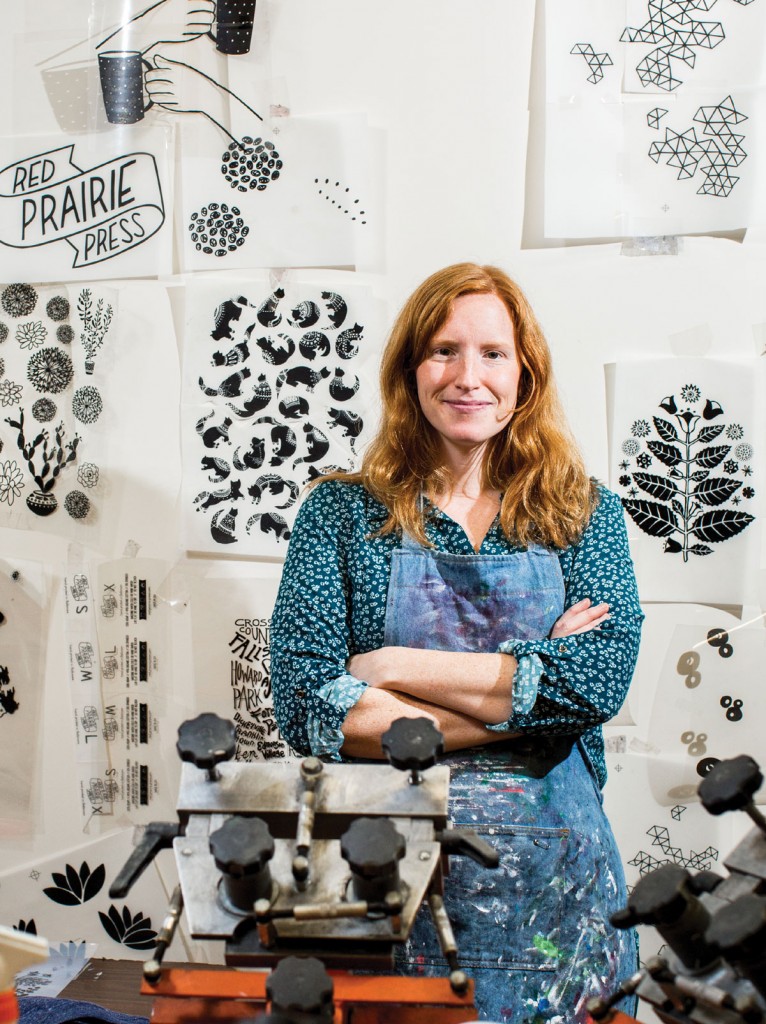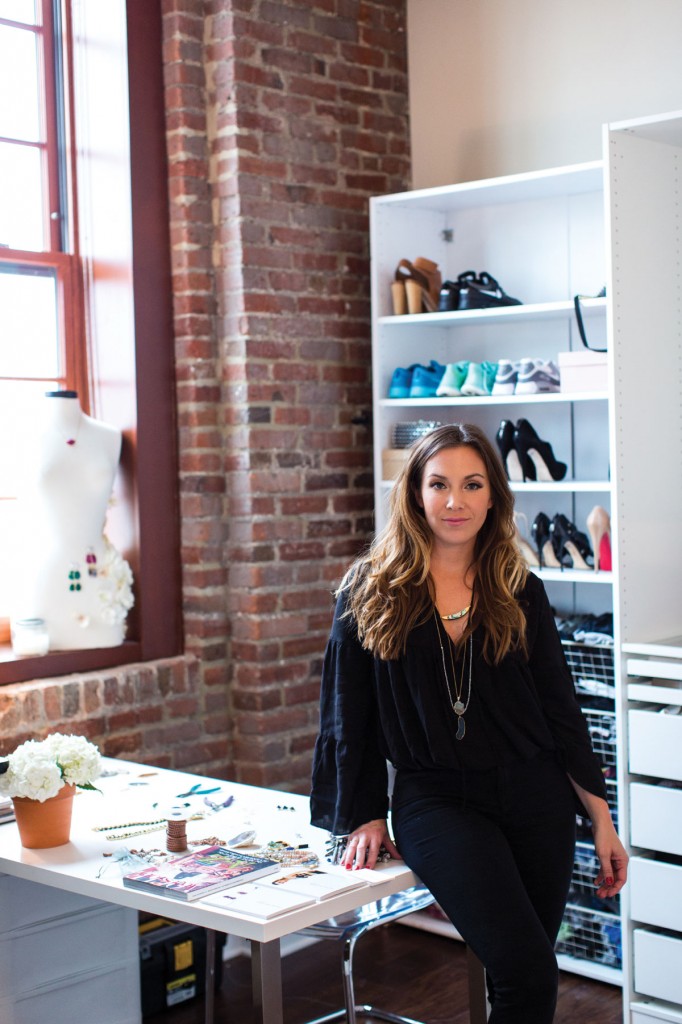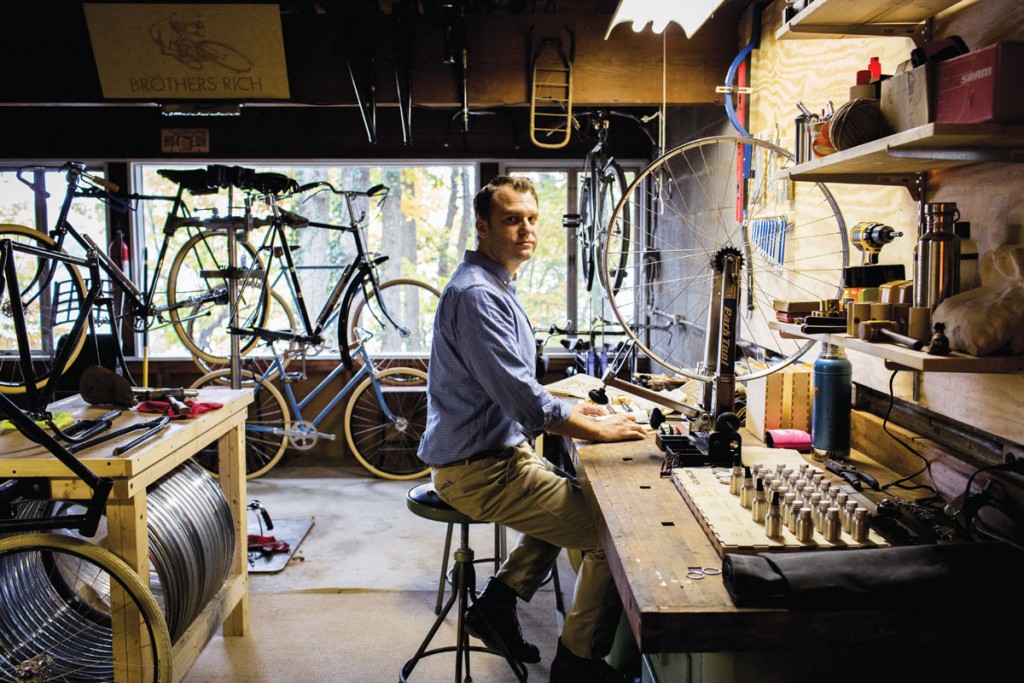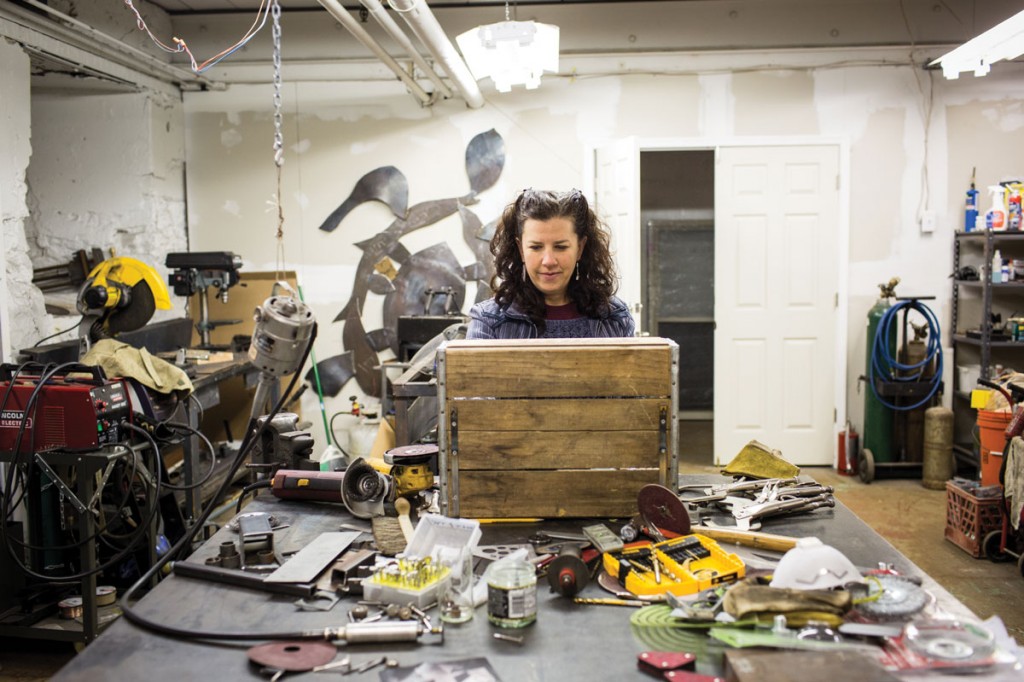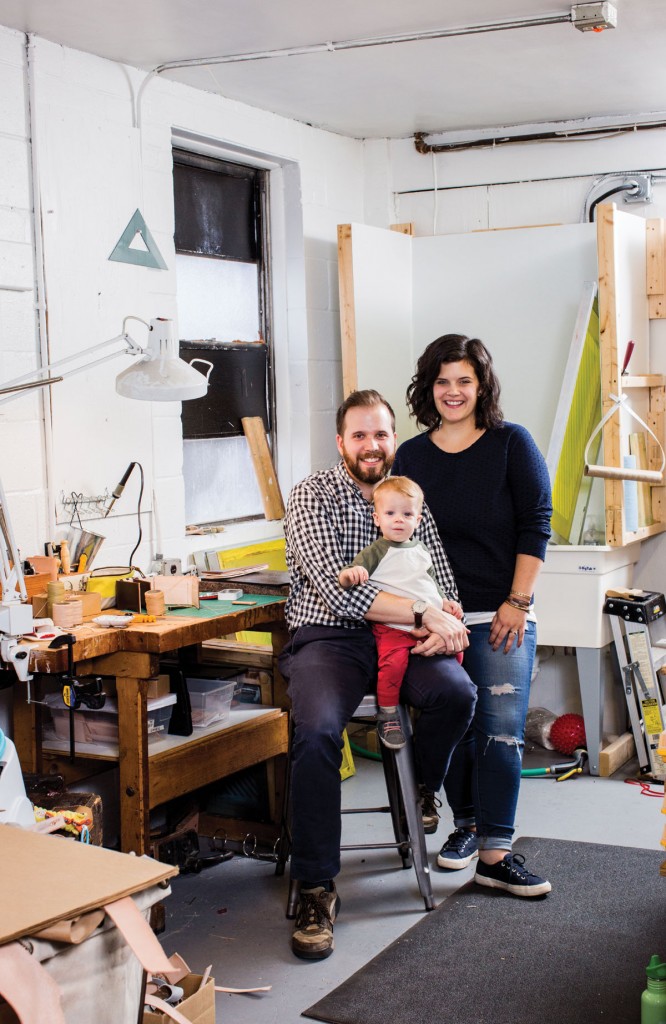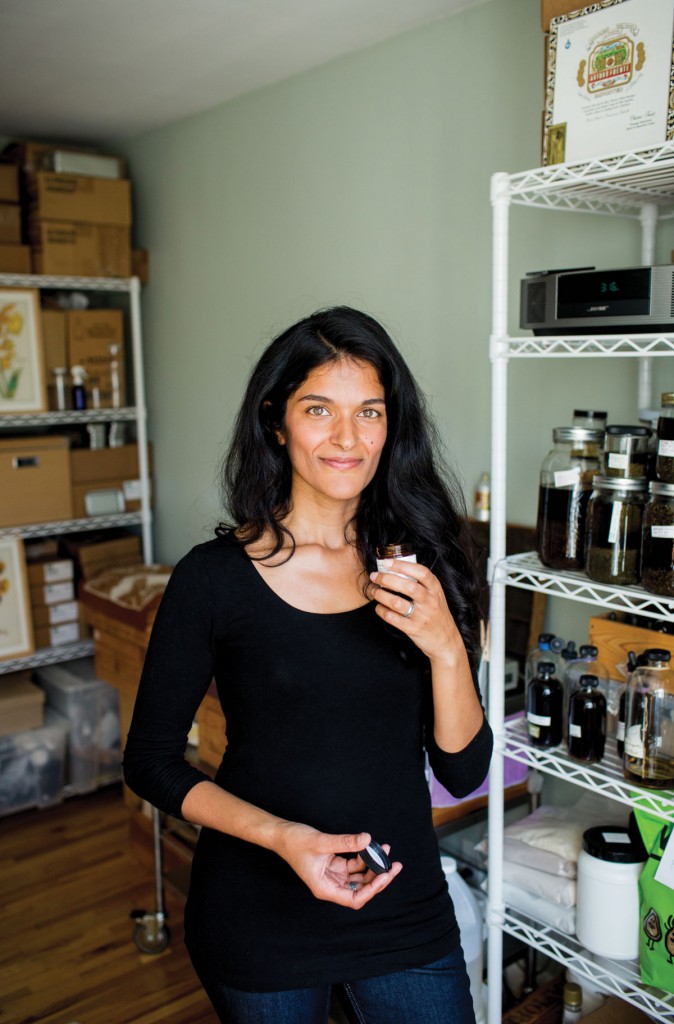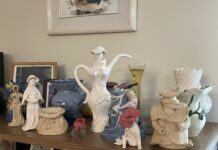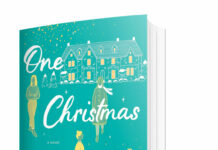Rachel Bone
[ Art with heart ]
Rachel Bone of Red Prairie Press owes her decision to start her own business to two unrelated catalysts: a terrible boss and a bout of near-frostbite from working in her studio shed one night.
“It occurred to me that, even in those miserable conditions, I was having more fun printing T-shirts in the cold by myself than I did in the business I worked for,” she remembers. “And I thought, ‘If this lady [her employer] is allowed to run a business, why can’t I?’”
Bone prints hand-drawn designs onto clothing and cardstock. Popular tees for fall 2015 include sketches of succulents, fox silhouettes and a graphic map of Baltimore neighborhoods.
Ethical manufacturing is imperative to Bone’s business, which strives to source sustainable fabrics that are American-made: “I want my customers to know where everything comes from, and I want to be able to tell people with confidence that my line is made by people who are being treated fairly.”
Accordingly, she spends much of her time tracking down fabrics and blank apparel. “It’s very difficult and time-
consuming,” she points out, but partnerships with ethically minded companies and collaborations with sewing firms in Southwest Baltimore keep Red Prairie Press well stocked.
“I was lucky to start out when I did: 2006 was right in the middle of the indie and alternative craft fairs’ rise to popularity,” she explains. “When the recession hit in 2008, though larger businesses were affected, I think people were really aching to feel connected to each other and to understand where their money was going, so the handmade movement thrived through most of that.
“I love the flexibility of being self-employed,” she adds.
“I also love the physical aspect of my job—I am happy to get up and carry heavy things, push squeegees around, and come home really messy and tired. I feel like I physically got something done, and from those great feelings came something useful that people seem to want and that makes them happy to own.”
Buy Red Prairie Press wares locally at Double Dutch Boutique, nationally at craft fairs and other stores—and online.
Rachel Mulherin
[ Jewelry with a capital J ]
With a customizable bridal line, a collection of seriously huge (but seriously lightweight) earrings, and a series of gossamer-like strands, bohemian glam—with an edge—is the M.O. of jewelry artist Rachel Mulherin.
After learning jewelry-making as a hobby from her mother, Mulherin scored an internship at the NYC fashion PR firm responsible for the L. Erickson jewelry line at Neiman
Marcus. “Editors would come in and say, ‘We need this for a shoot,’ and they’d draw something up and go downstairs [to the jewelry makers],” she explains. “Three hours later, they’d come up and the piece would be real.” An a-ha moment for Mulherin, she realized she could bring her hobby to a professional level.
Mulherin’s jewelry line made a splash right away with statement pieces. Her signature materials include “lots of metals, semi-
precious stones,” she says. “Each season, I switch up the colors, maybe add a pendant, but I keep those original styles. I want to make things that anyone can wear that are more timeless and won’t make you go ‘Ugh, I’m over that’ next season.”
Operating out of a home studio in Federal Hill, Mulherin finds many of her local clients through word of mouth. As for the clients she connects with from around the world?
“Instagram,” she says. “I just did jewelry for a few weddings in Australia because of
Instagram.”
She credits a thorough education in jewelry design to an early lucky break with Fab.com, where she learned the ins and outs of the jewelry business. Also helpful was some well-timed advice from her father: “I wanted to go to art school, but my dad said no; he said I needed to go to business school, which I did. Looking back, it helped so much in making a business and not just making jewelry for fun.”
To enhance her brand, Mulherin launched Rachel Goes Glam, a fashion blog featuring some of her jewelry designs. With the help of photographer Brittany Hale, Mulherin curates and styles models and herself for photo shoots for a glimpse at the woman behind the brand. “It’s been a challenge,” she admits. “I have a day job and a jewelry business and now a blog, but it’s been great for networking and getting my name out there.”
Paul Rich
[ Rich in ideas ]
Architect by day, craftsman by night, and occasional sailboat racer on weekends, Paul Rich creates products as varied as bicycles, crab mallets, and firewood carriers for his design firm, Brothers Rich.
One of five siblings, Rich finds inspiration in everyday life and his family. His late brother, John, owned and operated Oakleaf & Acorn, an Atlanta men’s boutique. “It was just a collection of things he liked,” Rich explains. “For him, it was like, ‘Isn’t that neat?’ It was genuine, pure and true, and that’s why it was successful. That’s what I’m trying to invoke in Brothers Rich.”
This dedication to authenticity has guided Rich’s design aesthetic: “I want anyone to be able to enjoy my products, to have a positive reaction, and to not have to read a dissertation about why it is the way it is.”
For example, when rebuilding a classic Raleigh Sports bicycle for his commute from his former home in Federal Hill (he now lives in Severna Park) to his downtown office,
“I wondered why they don’t make bikes like this anymore,” he recalls. “We have been sold on the idea that more is better, but not everyone needs 23 gears like Lance Armstrong to get where they’re going.”
Thus was born the Charleston, a custom bicycle with a vintage frame and the backbone of the Brothers Rich enterprise.
Another quotidian moment gave rise to his crab mallet. “We would spend over a hundred dollars on crabs,” he says with a laugh, “and sit there whacking them with 50-cent hammers.” And so he designed an elegant, hand-turned mallet with a rose gold joint.
Next, he plans to apply his ingenuity to creating an heirloom pacifier holder. “My brother Jimmer, who has a new baby, called me up saying, ‘Can you sew up some pacifier holders?’ I didn’t know what that was.”
After he learned about the need to clip a pacifier to a baby’s shirt so it doesn’t fall onto the floor, Rich realized that the idea had potential. The pacifier holders currently available “only come in baby blues or pastel pinks,” he says. “But I think we can do one that serves its purpose and has quality to it. Something that when you’re done with it, you can put it in a baby book.”
Jill Orlov
[ Industrial strength ]
Don’t let Jill Orlov’s penchant for miniatures fool you: She harbors major ambitions.
“In architecture school, I almost wished I could have gone into a dark room to sketch,” she notes. “I never wanted to re-create someone else’s work.”
A furniture maker, Orlov works metal and reclaimed materials into tables, nightstands and chests. Her work’s industrial look is tempered with whimsy, featuring clever phrases, layers of chipped paint or the occasional tiny furniture scene: Thumbelina bedrooms made from steel and copper, for instance, or a dining room for a dormouse or a Lilliputian storefront. All mix the masculine and the feminine.
Her diverse portfolio includes the series, “SIGNed Furniture,” which utilizes salvaged marquee letters, while “Furnished Furniture” showcases tables made of steel and glass and include her signature handmade miniatures.
“I toe the line to keep it from being too feminine or cutesy,” she says. While the details are delicate, the finished product is a statement piece with an industrial edge.
Raised in an artistic household—her mother was a painter who established a workshop in the family tool shed in order to build her own canvases—Orlov is used to the unconventional.
“She [worked] at a junior high as a guidance counselor,” says Orlov. “When they needed someone to teach woodshop, she said, ‘I’ll do it.’ She was the kind of mother who would build our bicycles for us.”
Gradually, Orlov began using her mother’s tools for her own artistic expressions, notably to create dollhouse miniatures. While she pursued a career in architecture, she also gravitated toward welding.
“I was terrified my first class,” she recalls. “My heart was racing. The instructor was very hands-off, and I wasn’t good with that,” she says of the continuing education course in welding she took at MICA.
After deciding to forsake architecture more than 10 years ago, Orlov began seeking apprenticeships to hone her welding craft. “I started out slowly,” she says. “When I [finally] got the idea to make furniture and a career out of it, I just fell in love.”
She now has a studio in Hampden with two metalworkers and a glass artist with whom she shares tools, ideas and resources. “My process is evolving,” she says.
Jacob & Whitney Cecil
[ Together is better ]
Whitney Cecil says it was inevitable that she and her husband, Jacob, would team up to create their business, Almanac Industries.“From the very beginning of our relationship we have been making things together,” she says. “It began with each of us helping each other out with our own individual projects, and then over time our individual projects turned into one.”
After meeting at art school, the pair—she was a photographer, he a sculptor—began making books. Now a press and design firm, Almanac Industries creates a product line that includes paper, leather and cloth goods, while also accepting custom orders for books and letterpress.
“A good bit of business happens online for us,” Cecil explains, “but we love meeting and interacting with our customers. We get to enjoy not only familiar faces, but we also get to see how our work ages.”
For Cecil, creating a line of boutique goods is all about the quality of the raw materials: “There’s a lot of swatch-touching. We try our best to source materials domestically, but sometimes it comes down to how a material feels in your hands or works with the plan.”
Sometimes, a simple design is where the magic lives. Take, for example, the Wingman, a minimalist handbag made of three pieces of stitched leather. The slim silhouette features raw-vegetable-tanned leather and peekaboo side prints in preppy dots or nautical stripes. “It’s the most beautiful thing we’ve made so far,” says Cecil, before adding, “second to our son.” Also popular: the Catchall Tray, made of a single piece of leather turned up at the corners with brass rivets.
Among Cecil’s favorite aspects of being a self-employed maker is the physical evidence of her hard work at the end of the day, as well as the insight that the process brings to the occupational and personal partnership she shares with her husband: “We have ended up learning a whole lot about our strengths and weaknesses and how we work best as a pair.”
Find Almanac Industries products at Becket Hitch in Lutherville and Trohv in Hampden or online.
Priya Narasimhan
[ Meet Priya, love ]
After chronic illness made Priya Narasimhan realize that the commercial products she had been using on her hair and face made her feel awful, she began mixing and using her own all-natural body balms. Almost immediately, she noticed a dramatic improvement. When Narasimhan told her friends about her experience, they encouraged her to start selling her products at craft shows, and, in the process, she created her company, Priya- MeansLove.
Armed with a degree in mathematics from MIT, Narasimhan brings an analytical approach to making, as she terms it, “materials that nourish the body and spirit. I formulate my products based on reading up on scientific research and on herbal traditions.”
Of-the-moment beauty trends don’t always find their way into Narasimhan’s products. “Botanical ingredients that really work for the skin and hair are the same now as they were a hundred years ago, oblivious to trends,” she asserts. “Our bodies don’t know what’s trendy. I have to go with my gut when I’m making my products. If my work dovetails with a trend, that’s great—but if it doesn’t, that’s great, too.”
A self-described “ingredient fiend,” Nara- simhan sources her botanicals and essential oils from small businesses. “I adore calendula blossoms,” she says, “so I get them from Sheep Hill Farm in White Hall [Maryland].” Her beeswax, meanwhile, comes from an apiary in Virginia.
While the rest of the world binges on Starbucks eggnog lattes, Narasimhan is mindful when developing her seasonal offerings, basing them on how a specific season affects the body. “Warming and grounding creams, body butters with clove, ginger, sesame in the fall and winter, and cooling ingredients like vetiver and leaves for the summer,” she explains. “I find it fun to play with the aromatics that evoke different seasons or have deep cultural connections to different times of year—conifers, spices, leaves, hay, myrrh. Different aromatics smell good at different times.”
Narasimhan has found that a personal stamp of approval goes a long way in the handmade beauty product world. “I just turned 36, and I feel my skin is better now than it was when I came up with my face cream five years ago,” she says. “I think the wonderful skin food in my products is a big part of why.”


